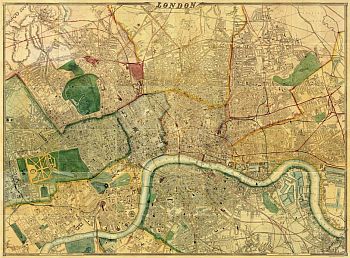I’ve spent quite a lot of time doing research, lately. I’ve been working on one of my novel projects, still in its very early stages, which is based in 18th century London. This is an era I’m reasonably comfortable with, but – damn – there is still a whole lot of research to be done. I’ve spent the last couple of days in 2nd hand bookshops, and now I’ve got an interesting haul, including one book on the Bedlam Asylum, which I’m dying to get into. But – of course – I kicked off my search for information to build my world on the good ol’ internet.
There’s nothing wrong with starting with Google or Wikipedia. They are great for finding useful threads of info to follow along. (And rabbit holes to disappear down for hours…) They rarely tell you the whole story, though, and you need to be wary about taking what they say for granted. But still, they’re a great place to start for pointing you in the right direction so you can work out what you need to find out more about.
In my travels through the internet, I’ve found a couple of sites that I thought were worthy of a mention here, in case anyone else is looking for similar information.
Firstly, this one: mapco.net

This is a fantastic FREE site that provides access to “high quality scans of rare and beautiful antique maps and views”. The site focuses on 18th and 19th century maps of London and the British Isles, and 19th century Australia, but there are maps from the 16th and 17th centuries available as well. When I say fantastic, it is really, really fantastic. The resolution on the scans is incredible. I can’t tell you how useful I’ve found it. The website is run on a not-for-profit basis and is really worth a visit.
Secondly, if you’re investigating London in any period, it is worth paying a visit to the conservation areas page of www.cityoflondon.gov.uk.
Each of the conservation areas in London (there’s 26) has its own character summary, which gives you a pocket history of the area going right back to Roman times. It describes how the use and character of each of these little patches of London has changed over time and identifies key significant features. These documents are fairly recent (I’m writing this in December 2014) and make for fascinating reading.
Finally, here’s a really useful post from over at Jane Austen in Vermont, on travel in Regency England. I say travel, because that’s what the title of the post says it’s about, but it’s full of useful stuff, like a county map of England (where exactly is Derbyshire in relation to Hertfordshire), how fast different modes of travel were (Mr Darcy vs the stagecoach) and a really good economic overview of Regency England.
